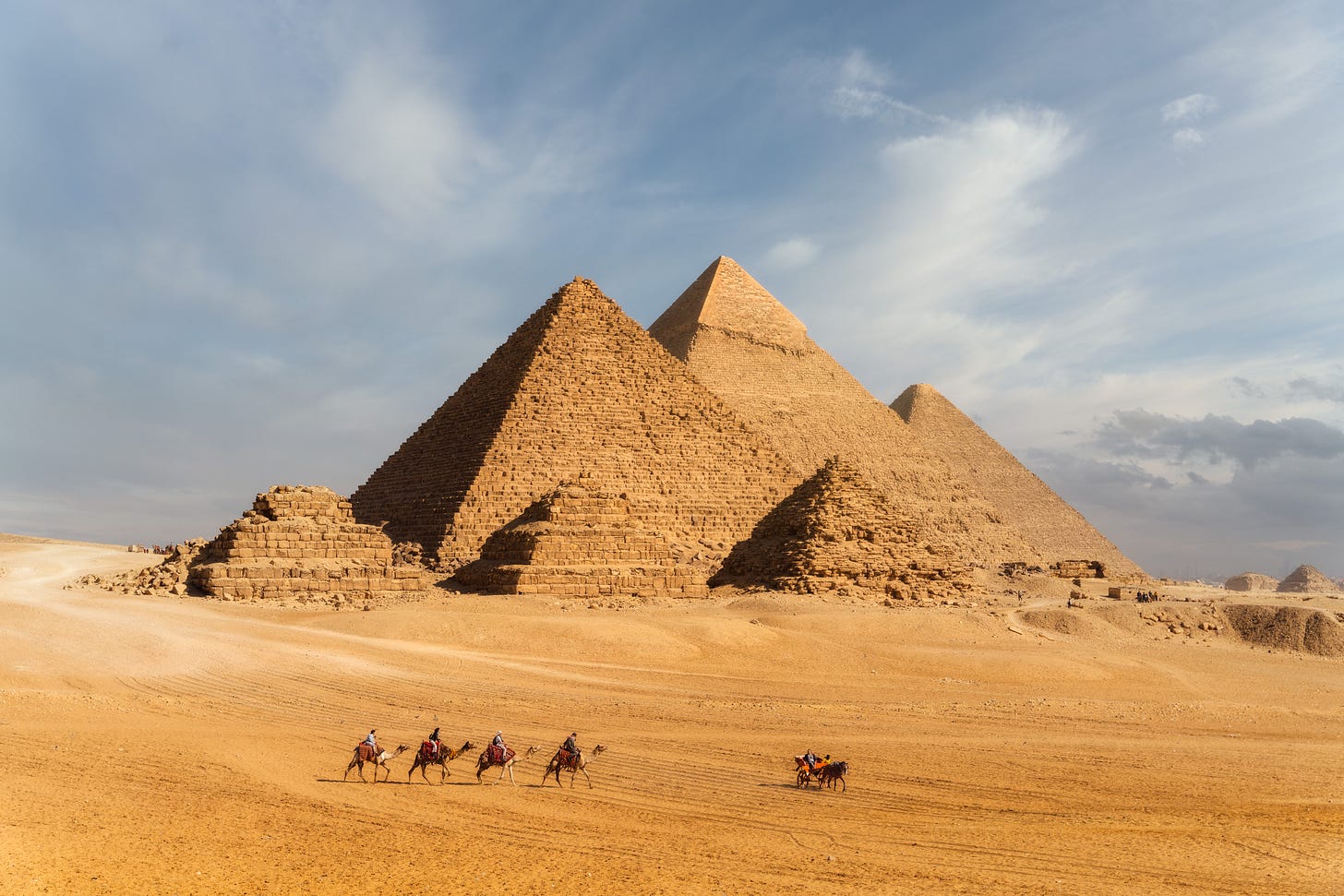Robert’s Ruminations: The Great Pyramids and the Panama Canal
Flip one on its head and you get the other.
Work is proceeding steadily on my next-after-the-next-one novel, The Mosquito God. I’m about 65,000 words along now, toward a rough goal of 100,000.
Mosquito is set in 1904, at the time when the French government’s effort to dig a canal across the Isthmus of Panama was at last collapsing for want of money, political fatigue in Paris, and—worst of all—diseases like malaria and yellow fever. Twenty-two thousand workers would die (mostly from tropical disease) during the period of French occupation, and another six thousand on the American watch. Not counting the enormous sums spent by the French, the canal cost $375 million to complete, or about $17 billion in today’s money.
Despite all the human and financial cost, the canal opened in 1914, and has been justly celebrated as one of world history’s greatest engineering achievements. Some may wonder why that is—after all, it is ‘just’ a big ditch, right?
Well, yes, but a lot more than a ditch. The sheer scale of the effort remains astonishing: Canal engineers excavated some 268 million cubic yards of dirt and rock to cut a channel from the Atlantic to the Pacific Ocean.
To give that figure some context, the Great Pyramid at Giza contains a volume of about 3.4 million cubic yards.
So you may think of the Panama Canal—if flipped onto its head—as eighty Great Pyramids—or one full-size Great Pyramid rising up every mile-and-a-half along the fifty-mile-long course of the canal.
Let that sink in, pals.
Then there were the challenges presented by geography. The Isthmus of Panama connects North and South America; you might think of it as a geologic comma or hyphen between two continents and two oceans. To top it off, there’s a chain of mountains running like sinew down the center of the isthmus; that took four years to sever. There were jungles to be cleared and swamps to be drained—all the while contending with rain, equatorial heat, insects, and snakes.
This is all on my mind not only because when I’m working on a project I get obsessed with my subject, but also because very shortly I’ll be heading to Panama to see, smell, and experience first-hand the things I need to give my story authenticity, dimension, and texture. In my opinion, imagination is a poor substitute for actual experience, so I like to use mine to fill in the blanks between direct observation.
I’ll have more on my stay in Panama coming up in the not-too-distant future. Stay tuned!





